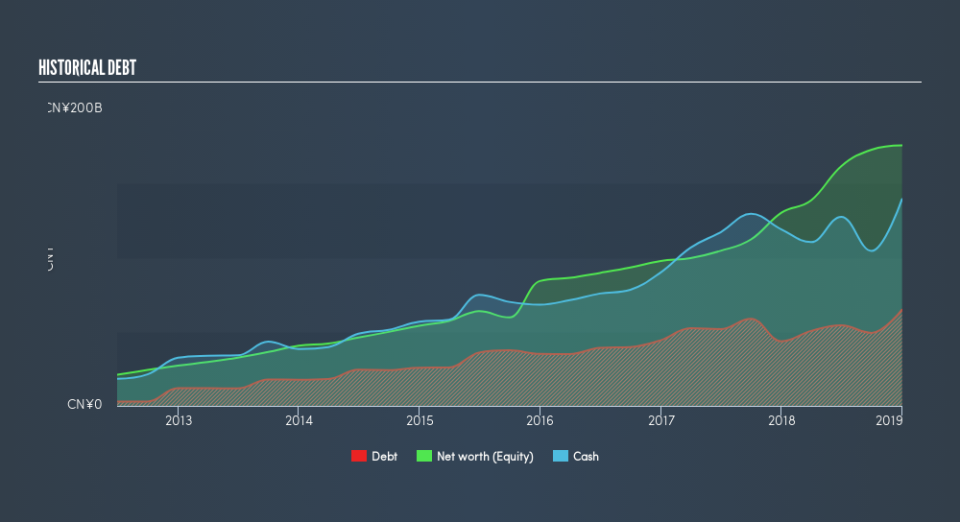Has Baidu, Inc. (NASDAQ:BIDU) Got Enough Cash?

With a market capitalization of US$60b, Baidu, Inc. (NASDAQ:BIDU) is a large-cap stock, which is considered by most investors as a safe bet. Common characteristics for these big stocks are their strong balance sheet and high liquidity, which means there's plenty of stocks available to the public for trading. These firms won’t be left high and dry if liquidity dries up, and they will be relatively unaffected by rises in interest rates. Using the most recent data for BIDU, I will determine its financial status based on its solvency and liquidity, and assess whether the stock is a safe investment.
View our latest analysis for Baidu
Does BIDU Produce Much Cash Relative To Its Debt?
Over the past year, BIDU has ramped up its debt from CN¥44b to CN¥65b – this includes long-term debt. With this increase in debt, BIDU's cash and short-term investments stands at CN¥140b to keep the business going. Additionally, BIDU has generated cash from operations of CN¥36b during the same period of time, resulting in an operating cash to total debt ratio of 55%, signalling that BIDU’s current level of operating cash is high enough to cover debt.
Can BIDU meet its short-term obligations with the cash in hand?
With current liabilities at CN¥57b, the company has been able to meet these commitments with a current assets level of CN¥155b, leading to a 2.73x current account ratio. The current ratio is the number you get when you divide current assets by current liabilities. Usually, for Interactive Media and Services companies, this is a suitable ratio as there's enough of a cash buffer without holding too much capital in low return investments.
Is BIDU’s debt level acceptable?
With a debt-to-equity ratio of 37%, BIDU's debt level may be seen as prudent. BIDU is not taking on too much debt commitment, which may be constraining for future growth.
Next Steps:
BIDU’s debt level is appropriate for a company its size, and it is also able to generate sufficient cash flow coverage, meaning it has been able to put its debt in good use. In addition to this, the company exhibits proper management of current assets and upcoming liabilities. I admit this is a fairly basic analysis for BIDU's financial health. Other important fundamentals need to be considered alongside. I recommend you continue to research Baidu to get a more holistic view of the stock by looking at:
Future Outlook: What are well-informed industry analysts predicting for BIDU’s future growth? Take a look at our free research report of analyst consensus for BIDU’s outlook.
Valuation: What is BIDU worth today? Is the stock undervalued, even when its growth outlook is factored into its intrinsic value? The intrinsic value infographic in our free research report helps visualize whether BIDU is currently mispriced by the market.
Other High-Performing Stocks: Are there other stocks that provide better prospects with proven track records? Explore our free list of these great stocks here.
We aim to bring you long-term focused research analysis driven by fundamental data. Note that our analysis may not factor in the latest price-sensitive company announcements or qualitative material.
If you spot an error that warrants correction, please contact the editor at editorial-team@simplywallst.com. This article by Simply Wall St is general in nature. It does not constitute a recommendation to buy or sell any stock, and does not take account of your objectives, or your financial situation. Simply Wall St has no position in the stocks mentioned. Thank you for reading.

